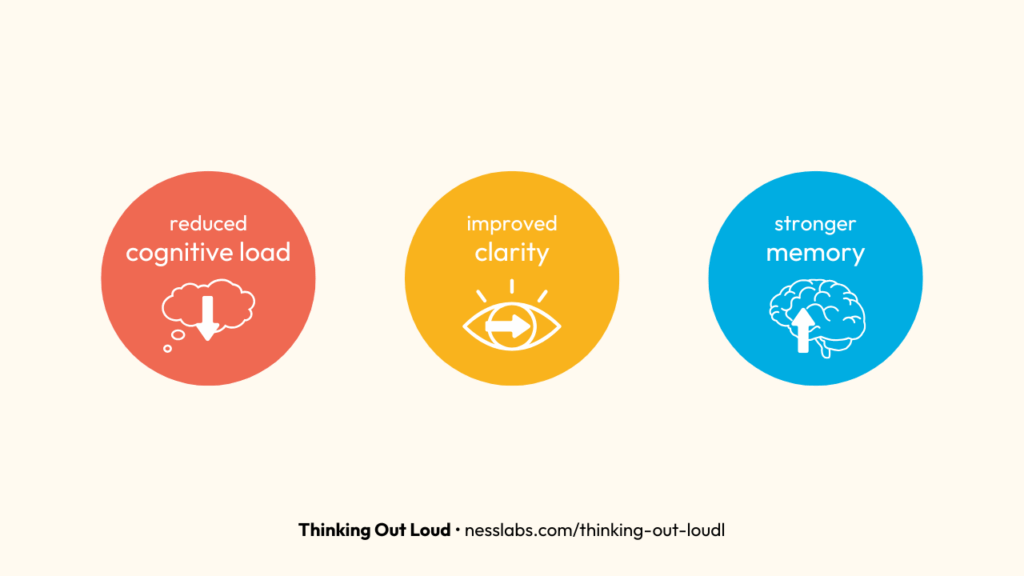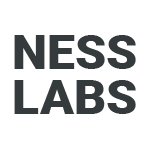For most of human history, knowledge was passed orally — shaped in dialogue, remembered in rhythm, refined through repetition. Our ancestors shared knowledge, solved problems, and preserved cultural memory through spoken words. Speaking wasn’t separate from thinking. It was thinking.
This primal connection between voice and thought remains deeply embedded in how we process information. When we speak our thoughts, different neural pathways activate than when we type or write silently.
Today, we tend to equate intelligence with what’s written — emails, essays, notes. But science, history, and experience all suggest that voice remains a powerful cognitive tool. In fact, speaking can improve clarity, creativity, and decision-making. Used well, it can sharpen how we work and how we think.
The science of thinking out loud
Research shows that vocalizing our thoughts engages different cognitive processes than silent thinking. Voltaire reportedly read every page of his work aloud multiple times. Darwin did the same with scientific drafts. When we speak aloud, we:

Reduce cognitive load. Psychologist Alan Baddeley’s model of working memory suggests a “phonological loop” — the part of the brain that holds spoken and written material. Speaking activates this loop, reducing cognitive load and freeing bandwidth for deeper reasoning.
Improve clarity. Studies show that explaining ideas aloud (even to yourself) improves understanding — a phenomenon known as the self-explanation effect — which can boost problem-solving and retention.
Strengthen memory. Reading aloud or repeating things vocally has been found to improve encoding in long-term memory. This is linked to the production effect, where memory is better for words that are spoken than those silently read.
As a bonus benefit, voice engages more brain regions than typing, including areas tied to empathy and emotion. This makes it a great tool for reflecting on complex decisions that involve interpersonal dynamics.
5 ways to use your voice in knowledge work
Speaking isn’t just for sharing finished ideas. It’s a powerful tool for shaping them. Here are five practical ways to use your voice to think more clearly, create more freely, and communicate more effectively:
- Walk through complex problems. When stuck on a difficult challenge, explain it aloud as if teaching someone else. Similar to the Feynman technique, this “rubber duck debugging” technique I saw many engineers at Google use often reveals solutions that weren’t apparent in silent thinking.
- Record your brainstorming. Use voice memos for initial idea generation. The spontaneity of speech often produces creative connections that slower and more careful typing might miss.
- Vocalize your writing. Read your drafted emails, reports, or presentations aloud before finalizing them. You’ll catch awkward phrasing, logical gaps, and tone issues more effectively.
- Dictate while walking. Combine physical movement with thinking out loud for maximum cognitive benefit. Take a walk while dictating thoughts on a problem you’re solving. You can see this as generating momentum both mentally and physically.
- Rehearse key points aloud. Before important meetings or presentations, practice articulating your main ideas out loud. It will help sharpen your thinking and build confidence.
Used intentionally, your voice can become a thinking tool. These five “voice-powered” practices can lead to clearer ideas, faster insights, and more confident delivery. The key is simple: say it out loud.
Voice-powered tools for knowledge work
In a world built around keyboards, voice-first tools can unlock speed, clarity, and new creative energy. Here are some of the best options to bring voice into your workflow:
- Voice typing. Wispr Flow is one of my new favorite apps for fast, flexible dictation across apps. It’s designed to let you speak freely while staying in flow, offering natural voice input, auto-editing, and working well even when you have to speak quietly.
- Meeting transcription. I started using Otter.ai when interviewing people for my book Tiny Experiments. It captures live conversations with real-time transcription, summaries, and highlights. Other great options include Granola (read the interview) and Grain.
- Text-to-speech. Tools like Speechify make it easy to absorb written content as audio, which is great to have the AI read back to you something you wrote and identify any areas that don’t quite make sense when you hear them out loud.
- Content creation. Turning voice notes into organized draft blog posts, outlines for videos or any kind of content is an undertapped use case for creators and knowledge workers. VoicePal, developed by Ali Abdaal’s team, does just that and does it well.
- Notes integration. You don’t even have to use separate apps. There are lots of ways to think out loud as part of your existing workflows. For instance, Obsidian’s Audio Recorder plugin lets you capture spoken thoughts directly into your knowledge system. You can also upload and play audio files in Roam Research.
In our typing-dominated work culture, it’s easy to forget that our voices were our first and most natural thinking tools. Voice is fast. It’s human. It reveals our thoughts before we edit and polish them.
So, next time you face a challenging problem or need to generate fresh ideas, try stepping away from the keyboard and engaging your oldest thinking partner: your voice.
